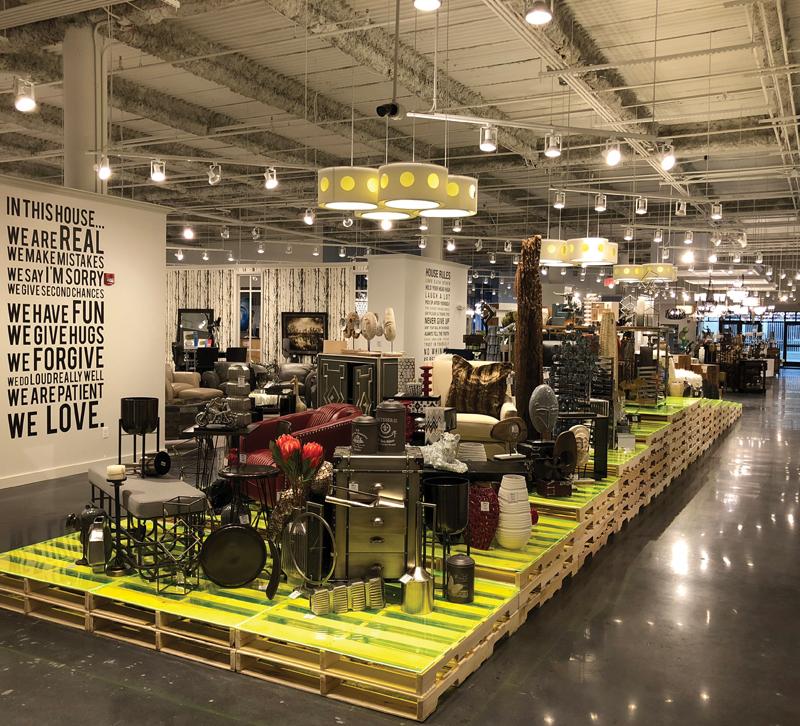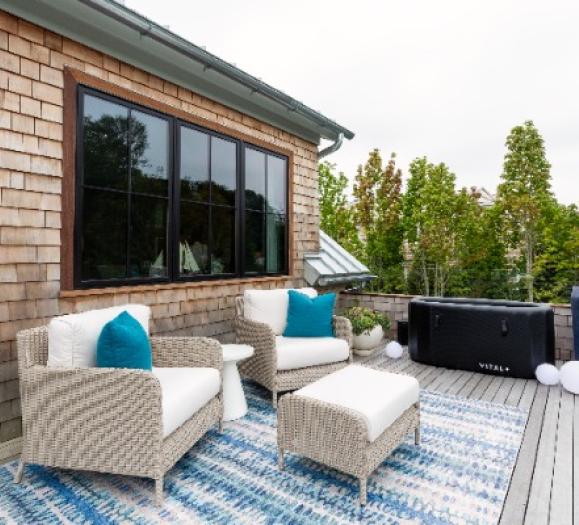When it comes to retail news, it’s difficult to escape the number of mall-store closings and blaring reports of the demise of the mall as a viable concept.
Yet, retail strategist Connie Post — a designer who has built a career on understanding where consumers are, what they want most, and where they are going next — thinks it may be time for at least one category of retailers to reevaluate the value of mall locations; namely, furniture retailers.
A New Frontier
“One of my clients opened a new store location in a mall in Peoria, IL, last month, and this is not the first client to take a look at a mall location recently,” says Post, who has been responsible for more than 20 million square feet of retail and wholesale space around the globe. “As counterintuitive as it may appear at first blush, it’s actually an ingenious move.”
With a mantra that has emphasized affordability and return on investment for furniture retailers for some three decades, Post says the steady exit of traditional mall anchors like Sears and Macy’s presents real opportunity for large furniture retailers now.
“As little as a decade ago, the high-dollars-per-square-foot rents that malls commanded made them unrealistic as locations for the typical furniture store,” she describes. “But, as the retail landscape has changed and malls have lost some of their traditional tenants and appeal, mall owners have begun reaching out to other businesses that can help fill their large empty spaces. They have begun to recognize that furniture retailers, as destination stores, can help make the malls themselves more viable. On the flip side, the furniture retailer that chooses a mall location benefits by gaining increased visibility and regular exposure to potential customers they might not otherwise see.”
Retail real estate expert Julius Feinblum, principle of Julius M. Feinblum Real Estate —the country’s largest firm dedicated specifically to the home furnishings industry — agrees that a new trend is in the offing.
“We’ve done several deals for furniture retailers across the country in the past two years involving malls, and we’re looking at a batch of mall locations right now,” he relates. “For the most part, furniture retailers are still not going to get into the best malls, but they are more welcome now in B- and C-locations in certain cities. From a purely economic point of view, mall traffic is not what it once was, so furniture retailers cannot justify the expenditure if they are expecting the move to instantly solve their traffic problems. But furniture stores are destinations, and for that reason, I think Connie is right about the possibilities.”
Still he cautions, “You’ve really got to know your real estate, weigh the risks and approach this on a case-by-case basis.” An incorrect assumption about a mall location could spell disaster for any large furniture retailer.
The Strategy
The key to success, Post believes, lays in vacant anchor positions that offer a main entrance from a mall’s parking lot, as well as an entrance connected to the mall’s interior. The latter is vital to lure consumers shopping in the mall who might not currently be in the market for furniture.
“With its exciting, urban industrial vibe, the new mall-based furniture store we just opened in Peoria is a far cry from long defunct mall-based furniture retailers like Bombay and Kirkland’s,” Post explains. “But, just as it was in those stores, it’s all about instant gratification
in a mall shopping experience.”
For this reason, items like accent furniture and colorful pillow displays were invitingly positioned at the store’s interior entrance. And, to make the entrance to the space quite literally glow when viewed by shoppers already inside the mall, Post dropped clouds of brightly lit chandeliers from the ceiling above it. Once tempted to venture inside, shoppers encounter an airy, open layout that “encourages exploring and moving further into the space.”
With vacant space working in their favor, furniture retailers may want to consider malls in their future.







